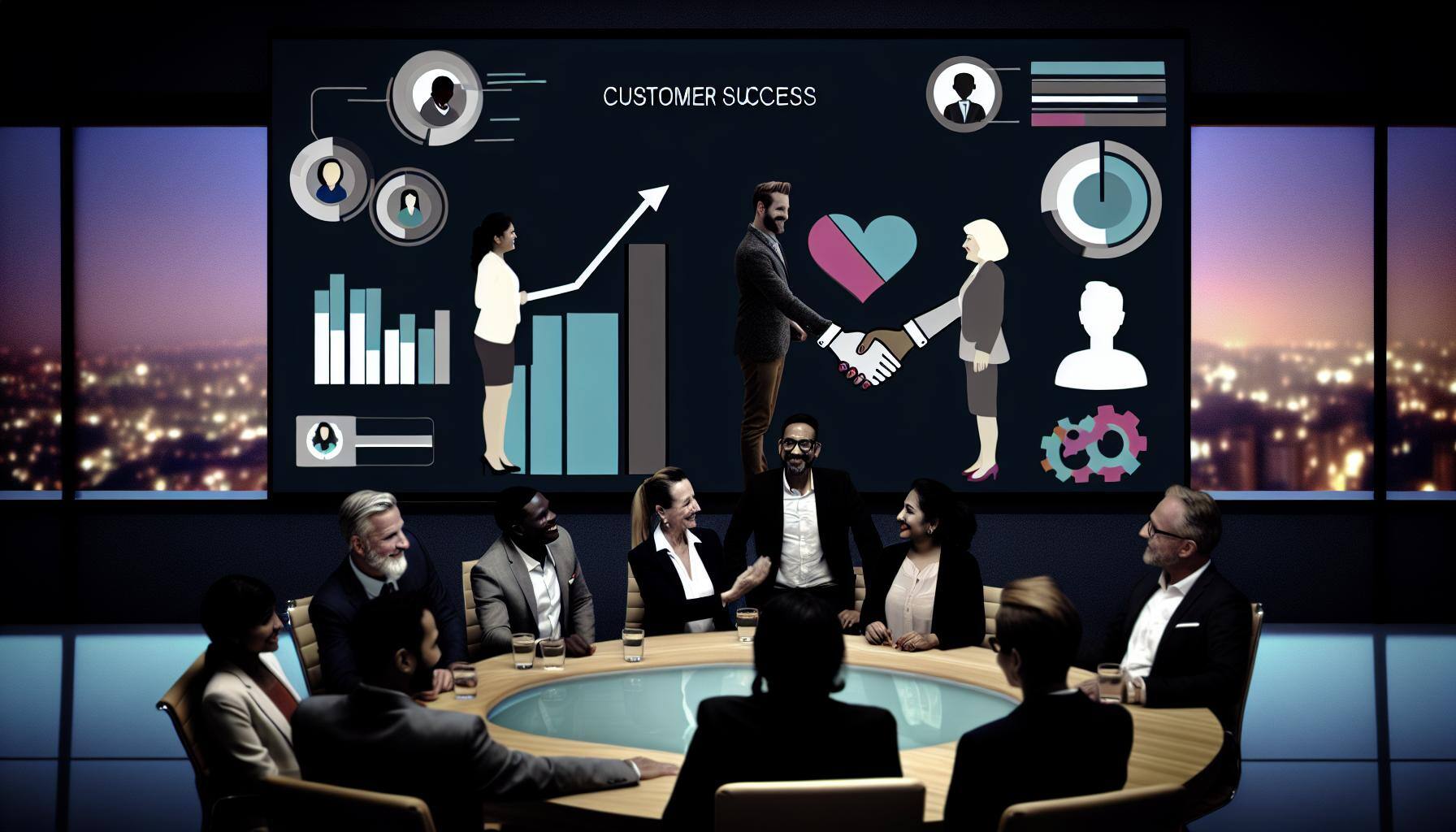How To Pick the Best Customer Success Software in 2025
Congratulations! You’re exploring Customer Success Software, which means you’re running a successful business with room to elevate your customer...
6 min read
 Dan Wilson
:
Nov 19, 2024 5:23:01 AM
Dan Wilson
:
Nov 19, 2024 5:23:01 AM

If you're feeling overwhelmed by scattered data, inconsistent processes, and a lack of proactive customer engagement, you're not alone. Many businesses, especially those just starting to build their customer success team, face these exact challenges. It won't surprise you to know, most small to medium sized businesses manage customer relationships with limited tools. Monthly check-ins, manual tracking, misleading metrics, and scattered data make it nearly impossible to stay on top of customer activity, identify risks early, or take meaningful action.
So, do you need to invest in complex, expensive software to solve these issues? Not necessarily.
Customer success platforms (CSP) can be shockingly pricey, and there are over 230 options listed on Capterra alone. Most of them offer similar features: health scores, onboarding, churn predictions, sentiment analysis, workflow tracking, automated actions, playbooks, and more. They’re trying to appeal to big enterprises with deep pockets, which means piling on features to check as many boxes as possible for RFPs and making it to the next sales stage.
While large enterprises might need all these bells and whistles, they also have the processes, the maturity, and the staff to manage the complexity. They can hire someone just to administer the CSP, and they can afford the months (or years) it takes to get everything implemented. But can you?
It’s frustrating to pay for features you don't need or struggle through a complex setup that doesn't fit your workflow. Maybe all you need is a simple way to understand what’s happening with your customers, know who needs your attention, and create easy reports that show the value the CS team brings to your company.
The Problem: Messy and Reactive Customer Success
Does any of that sound familiar? It can be confusing and frustrating trying to figure out the best next step when you're managing customer success without the right tools. If you're dealing with these challenges, you're not alone—and it's okay to feel uncertain about where to go from here.
Many CSMs, especially those in early/mid stage companies, use a mix of tools to manage client relationships and renewals. Here's what that often looks like:
Use of basic tools: Customer success teams often use spreadsheets or basic CRM tools like Google Sheets to track accounts, client interactions, and renewals.
Scattered data: Data is scattered across different sources—support tickets, product usage logs, email threads—making it hard to get a complete view of customer health.
Manual and reactive processes: Processes for identifying at-risk accounts are mostly manual and reactive, based on CSM guesswork instead of data.
Inconsistent check-ins: Teams rely on regular check-ins to understand client satisfaction and usage. But these methods are inconsistent and prone to human error.
Late detection of warning signs: Warning signs, like decreased product usage or delays in renewals, may be noticed too late to make a difference.
No clear system for prioritizing: There's often no clear system to assess account health or decide which customers need attention, leading to missed chances for proactive engagement.
Reliance on personal judgment: Without structured tools or predictive analytics, customer success managers have to rely on their personal judgment to figure out which accounts are at risk.
Unsustainable as the company grows: This approach might work for smaller client lists but becomes impossible to manage as the company grows.
Check-ins lack depth: Monthly check-ins are often the main way to assess customer health, but they usually don't provide enough detail on deeper issues.
Clients speak up too late: Clients often share dissatisfaction only after problems have grown, making it hard to save the account.
Missed opportunities for growth: Opportunities for upselling, cross-selling, or building deeper relationships are often missed because the approach is so reactive.
Inconsistent platform usage: In some cases, clients may not use the platform consistently, which creates more problems. For example:
Lack of understanding: Clients may not understand the value of the tool or how it fits into their workflow.
Unreliable usage data: If usage data is unreliable, it's hard to show value or find gaps in engagement.
Too many responsibilities: Customer success teams are often stretched thin, trying to balance risk management, relationship building, and renewals without the right tools.
Strained resources with growth: Without automation or standard workflows, even a small increase in clients can strain the team and lead to neglected accounts.
If you're frustrated by the complexity and cost of traditional customer success platforms, there's a simpler way. You don't need to change your entire workflow or spend a lot of money on a complicated system just to get the insights you need. Churn Assassin is built to give you the most important features without piling on more and more features, so without needing a complex (and pricey!) customer success platform, Churn Assassin lets you:
Efficiently pinpoint high-risk customers and engagement opportunities by accessing a heatmap that consolidates data from various sources.
Proactively address customer account cancellation risks with machine learning that identifies concerning behavior patterns.
Focus your efforts on at-risk accounts by receiving alerts months before potential cancellations, giving you ample lead time.
Optimize your budget by gaining up to 80% of the benefits of traditional customer success platforms at a fraction of the cost.
Eliminate unnecessary complexity and expenses by utilizing essential features without extra, costly add-ons.
Save time and avoid workflow disruptions with a setup process that takes just two minutes.
Continue working with your existing processes since the solution adapts to how your business already operates—no changes needed on your end.
Quickly act on key trends and churn signals with daily reports that summarize the most important data.
Manage effectively without expanding your team because the insights are straightforward and ready for immediate action.
Easily scale the solution as your business grows without being confined to strict workflows or needing extensive customizations.
Develop your processes with supportive tools that offer flexibility, accommodating your business's evolving needs without rigid
If your company has grown to the point where you have clear processes in place and a large customer success team that needs a unified system.
If you need deep integrations with enterprise systems like CRMs, advanced playbooks, and detailed analytics.
Imagine two seasoned chefs in the bustling kitchen of customer success—Churn Assassin and ChurnZero—both crafting recipes to prevent customer churn. They use similar ingredients like predictive analytics and customer success insights to keep your SaaS business thriving. But while both aim to delight the palate, their cooking styles cater to different tastes.
Here's a detailed comparison about ChurnZero vs. Churn Assassin
Standing at the crossroads of customer success solutions, one might ask: Is it better to have a Swiss Army knife or a scalpel? Both Churn Assassin and Gainsight are powerful tools designed to reduce customer churn and enhance retention for SaaS businesses, but they serve different purposes.
We did an in-depth review of Gainsight vs. Churn Assassin
If customer success platforms were journeys, Churn Assassin and SmartKarrot offer different paths to the same destination: reducing churn and boosting retention. Both monitor customer behaviors and provide actionable insights, but how they get you there sets them apart.
Here's many more facets to examine about SmartKarrot vs. Churn Assassin
In the symphony of customer success platforms, Churn Assassin and Totango play harmonious yet distinct melodies. Both aim to strike a chord in reducing customer churn for SaaS businesses, offering features like churn prediction and customer health scoring.
Want more details about Totango vs. Churn Assassin?
We aren't saying customer success platforms are all bad—they can be great for the right type of business. Many of these platforms have well-thought-out features that help a lot of companies succeed. But if you're an early or mid-stage business, the options can feel overwhelming and not quite the right fit. That's why we built Churn Assassin.
The founder, Brian, was once the CEO of a small SaaS company, and they tried several customer success platforms. While these platforms had lots of features and looked impressive, they didn't match the needs of his business at that stage. Churn Assassin was born out of the desire for a simple, effective solution that focuses on the essentials, without all the unnecessary extras.
You can begin a 30 day free trial of Churn Assassin today, right now even. Adding our JavaScript snippet to your web application takes a few minutes, after that Churn Assassin will start learning about your application, and the behaviors of your customers and users, without needing additional configuration from you. You can start getting real insights you can use before you'd probably even get to your first meeting set up with one of the big platform's sales team. Ready to give it a shot?

Congratulations! You’re exploring Customer Success Software, which means you’re running a successful business with room to elevate your customer...

Losing existing customers is one of the most frustrating and costly challenges for your business, especially if you're a B2B SaaS company aiming for...

How You, as a C-Level Executive, Can Reduce Churn in Key Accounts In this guide, we will explore the significant role you play in reducing churn in...